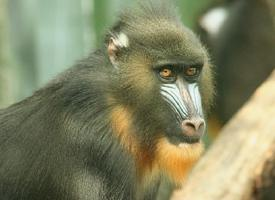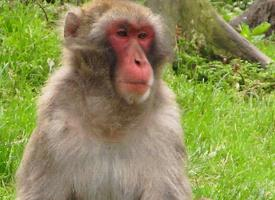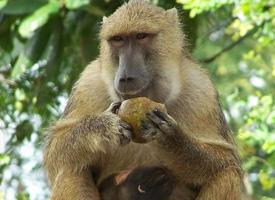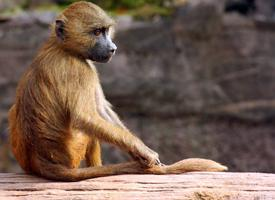
Poids et mesures
| Longueur | de 60 à 75 cm |
|---|---|
| Poids | de 10 à 26 kg |
| Longueur de la queue | de 40 à 60 cm |
Données biologiques
| Durée de vie | de 35 à 45 ans |
|---|---|
| Durée de gestation | de 170 à 173 d |
| Nombre de petits | 1 |
Description de l'animal
The Guinea baboon (Papio papio) is a fascinating and unique species of baboon, indigenous to the savannas and forests of West Africa, specifically found in countries like Guinea, Senegal, Gambia, southern Mauritania, and western Mali. This species is one of the smaller members of the baboon family, but what it lacks in size, it more than makes up for in social complexity, behavioral diversity, and adaptability.Physically, the Guinea baboon exhibits a robust and muscular build, with males significantly larger and more robust than females. Adult males can weigh between 20 to 30 kilograms (44 to 66 pounds), whereas females are generally lighter, weighing between 13 to 20 kilograms (29 to 44 pounds). Their fur is primarily a reddish-brown color, with darker shades on the back and lighter shades on the belly and around the face. One of their most distinctive features is their long, dog-like muzzle, which is less pronounced in females. Their tails are uniquely shaped, with an initial downward curve that flips upwards at the end, giving it a characteristic 'J' shape.
Guinea baboons have highly dexterous hands and feet, allowing them to grasp objects, groom each other, and efficiently forage for food. Their diet is omnivorous, consisting of a variety of plants, fruits, seeds, roots, and small animals, including insects and small mammals. This dietary flexibility has allowed them to thrive in a range of environmental conditions.
Socially, the Guinea baboon is intriguing. They live in large, multi-male, multi-female groups known as troops, which can number from a few dozen to several hundred individuals. These troops are structured in a complex hierarchy that influences access to resources, mating opportunities, and social interactions. Within this hierarchy, males establish dominance through physical strength and alliances, whereas females have their own hierarchy, which is generally determined by lineage.
The social life of Guinea baboons is characterized by intricate relationships and social strategies. Grooming plays a crucial role in their society, serving not only as a means of hygiene but also as a way to form and maintain social bonds, alleviate tension, and establish alliances. Communication within troops is multifaceted, involving a variety of vocalizations, facial expressions, and body postures.
Reproduction in Guinea baboons is not strictly seasonal, although there may be peaks in births related to the availability of food resources. Females give birth to a single offspring after a gestation period of approximately six months. Infant baboons are highly dependent on their mothers for the first few months of life, receiving not only nutrition but also protection and socialization within the troop.
Despite their adaptability, Guinea baboons face threats from habitat destruction due to agricultural expansion, deforestation, and human settlement. They are also hunted for bushmeat and captured for the pet trade. Conservation efforts are crucial to ensure the survival of this species, focusing on habitat preservation, anti-poaching measures, and public education to reduce human-wildlife conflict.
In summary, the Guinea baboon is a captivating species with a rich social structure, diverse behaviors, and remarkable adaptability. Their continued survival depends on the concerted efforts of conservationists, local communities, and governments to protect their natural habitats and mitigate the pressures they face from human activities.
Carte de répartition
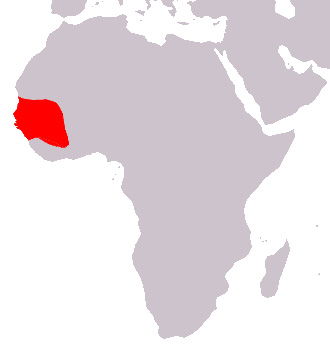
Animaux similaires
Nouvelles photos d'animaux
Top 10 des animaux
- Dolphin gull (Leucophaeus scoresbii)
- Japanese macaque (Macaca fuscata)
- Stone loach (Barbatula barbatula)
- Greek tortoise (Testudo graeca)
- Russian tortoise (Testudo horsfieldii)
- Galápagos tortoise (Geochelone nigra complex)
- Diana monkey (Cercopithecus diana)
- Moustached guenon (Cercopithecus cephus)
- Common flying dragon (Draco volans)
- Galápagos penguin (Spheniscus mendiculus)
